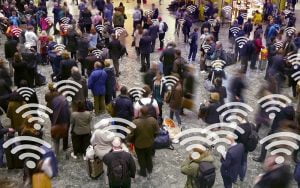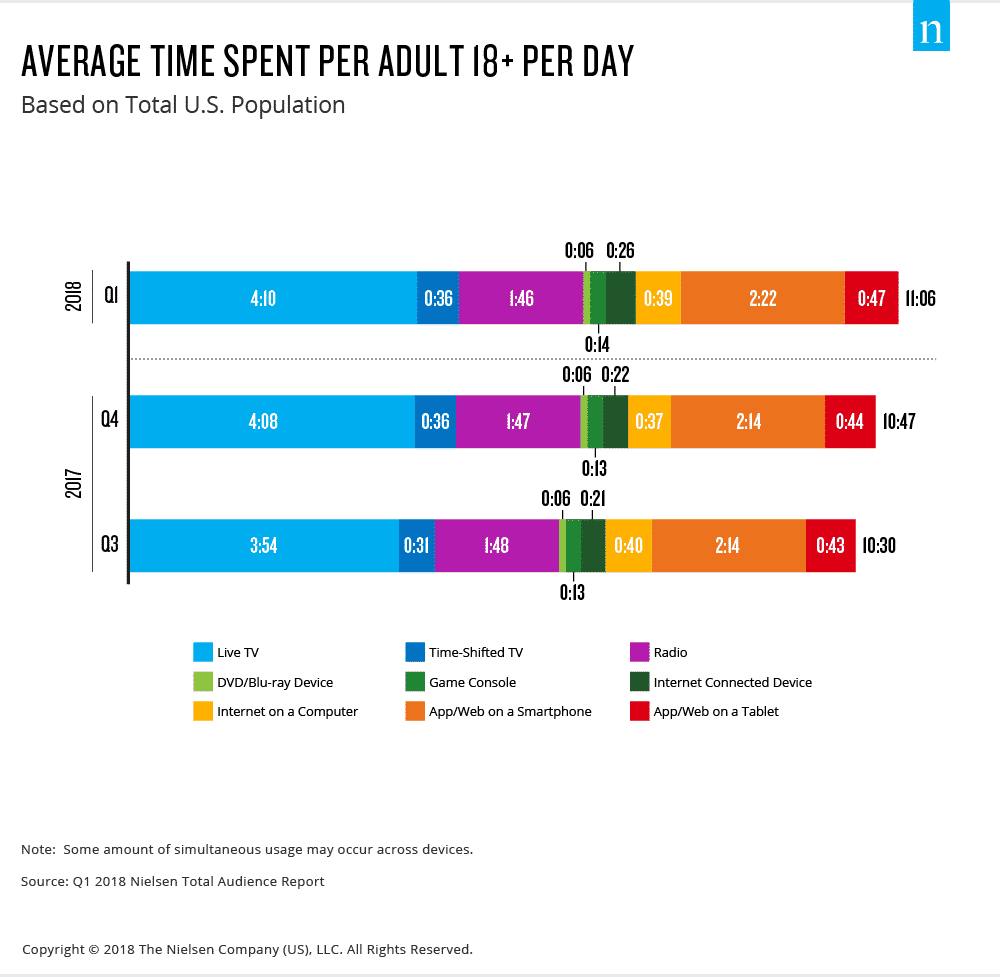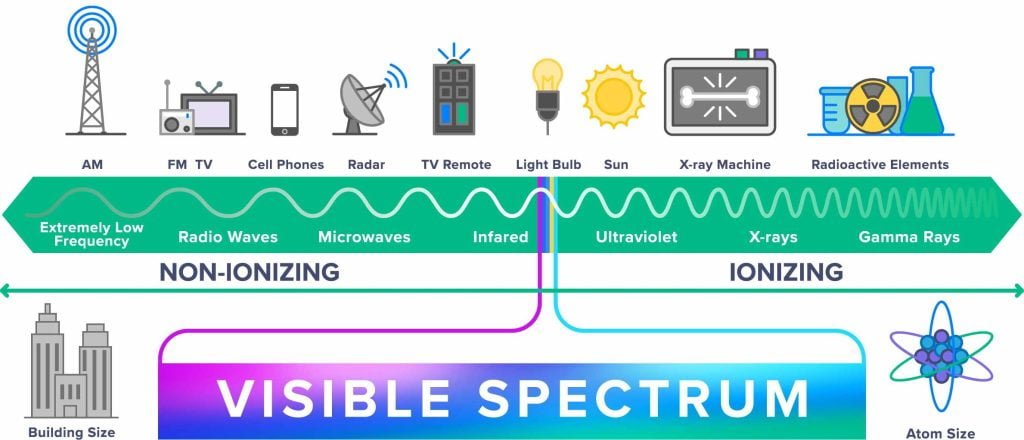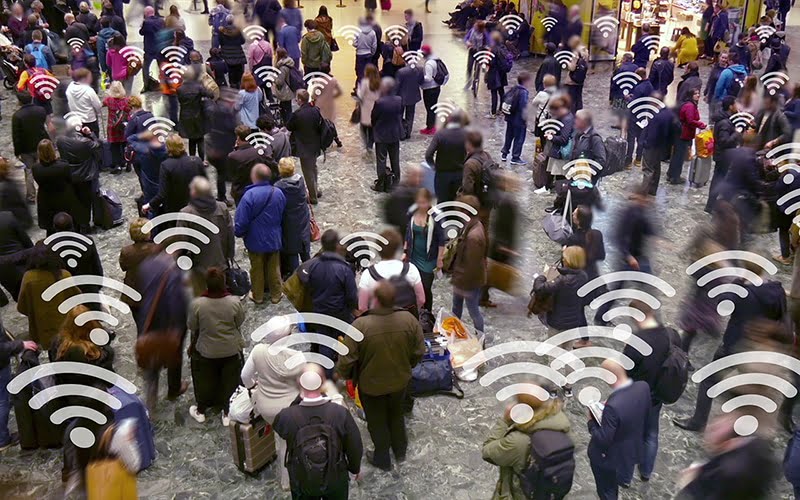Your cart is currently empty!
What is Electromagnetic Radiation (EMF)?

Electronic devices are everywhere you look.
Whether it’s a cell phone, smart speaker, refrigerator, or a WiFi router, we can’t seem to escape our electronics.
As of 2019, 95% of Americans own a smartphone. That’s a lot of people, yet it understates the percentage of us exposed to these electronic devices and wireless networks.
Electronic devices are not only growing in popularity. They are also growing in usage — meaning more people are using them for longer and longer periods.
According to a Nielsen survey, the average American spends 11+ hours a day with electronic media.
We basically spend two-thirds of our waking hours wired. Even while sleeping, our devices are still on and close by. Why is this concerning? Even when we aren’t using our devices, they are still emitting something called EMF radiation.

What is Electromagnetic Radiation?
We spend more time with our devices than we do with our significant others, so it’s weird that we don’t actually understand them. So how do they work?
Every electronic device needs an electric current passing through a circuit to perform a function. Electromagnetic fields, also known as “radiation,” is energy created from this circuit.
As a result of electrons moving, electricity is generated in one direction and magnetism in another. This results in energy moving in two directions. The energy of the electricity moves on an x-axis and perpendicularly at a 90 degree angle a magnetic field is generated alongside it.
These energy fields travel predominantly in waves, and the different energy levels of waves are ordered together on the Electromagnetic Radiation Spectrum.
The Electromagnetic Spectrum

Generally speaking, there are two broad categories of electromagnetic frequencies on the spectrum: “Non-Ionizing Radiation” and “Ionizing Radiation.”
The radiation emitted by our electronic devices, like our cell phones, laptops, tablets, televisions, cell towers, and Bluetooth headphones, are all classified as low-energy non-ionizing radiation (commonly referred to simply as EMF), as opposed to the high-energy ionizing radiation.
Ionizing radiation is directly harmful to cells, and it can even ionize (split) atoms. An extreme example of ionizing radiation would be that of an atomic bomb.
Non-ionizing radiation is low energy and some argue that it is safe for that reason. However, health concerns such as cell damage, are not immediately seen with non-ionizing radiation exposure but are still very much a health danger.
Types of Electromagnetic Radiation
Electronic devices emit 2 distinctly different types of radiation, ELF and RF emissions.
Extremely Low Frequency (ELF) EMFs – 0 Hz to 300 Hz
Electronic devices have either a plug or a battery that generates an electric current to power the components of the device. This power source leaks out low levels of radiation, called Extremely Low Frequency (ELF) radiation. It does not travel far, since it’s not trying to go anywhere. Think of it as a water leak from a hose, compared to a water gun.
Radio Frequency (RF) EMFs – 300 Hz to 300 GHz
This is the water gun of the analogy. When an electronic device wants to communicate to another device, it sends a wireless signal to that device. The signal is then converted into audio, video, texts, and images.
They are also referred to as Microwave (MW) signals. These frequencies include Cellular Networks (3G, 4G, 5G), WiFi, Bluetooth, RFID, NFC, and GPS.
RF signals can be transmitted at many different frequencies (Hertz) and power levels (Watts/Volts). A cell phone signal, for example, can travel several miles, while a WiFi signal stays below 100 feet. A WiFi router uses a similar frequency that a microwave oven uses to cook food, but transmits at a lower power level. Electronics need to generate different power levels in order to accommodate the different distances they can travel.
EMF’s Impact
A widely popular belief is that if it’s not ionizing radiation, it can’t hurt you.
However, a growing body of scientists believe that exposure to non-ionizing radiation over prolonged periods, such as years, may cause oxidative stress and cellular damage, which can lead to many health problems. Current scientific studies are substantiating their concerns.
Similar to how the Grand Canyon was created, a small force over a long period of time can cause great changes. With people using these devices close to their bodies on a regular basis, many are becoming concerned about their constant exposure to EMFs, especially now that the length of exposure has spanned more than a decade.
Nonetheless, because many electronic devices we use everyday like laptops, tablets, and cell phones are relatively recent commodities, studies are not yet capable of finding established long-term effects, which can take 20 years or more.
We urge that for now, the precautionary approach be taken, where we limit our exposure to electronic devices as much as we can until definitive evidence comes about.






















































